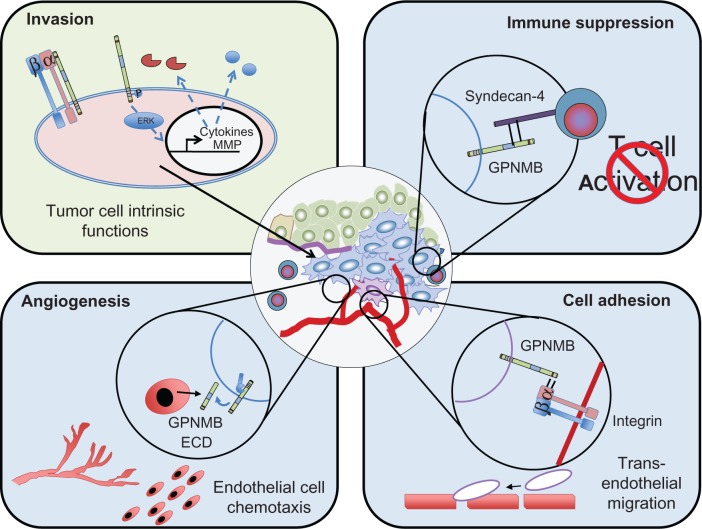Figure 2.
Potential mechanisms through which GPNMB promotes malignant cellular phenotypes within cancer cells.
Notes: GPNMB may act cell autonomously (green panel) to induce intracellular signaling, which can influence the expression of multiple targets, including matrix metalloproteinases and cytokines, and enhance the invasiveness of tumor cells. GPNMB may also be important in regulating interactions between tumor cells and cells within the tumor microenvironment (blue panels). It can act as a cell/cell adhesion molecule by engaging integrins expressed on cells in the tumor microenvironment, such as endothelial cells. GPNMB-mediated interactions with syndecan-4 expressed on T cells can block the proliferation and activation of these cells, leading to an immunosuppressive environment favoring tumor growth. Finally, GPNMB may function in a paracrine fashion due to shedding of its extracellular domain, or through its release from cells in the form of microvesicles, leading to endothelial cell recruitment. All of these potential functions of GPNMB can promote tumor growth, invasion, and metastasis in a variety of cancer cells.
Abbreviations: ECD, extracellular domain; GPNMB, glycoprotein non-metastatic b.

